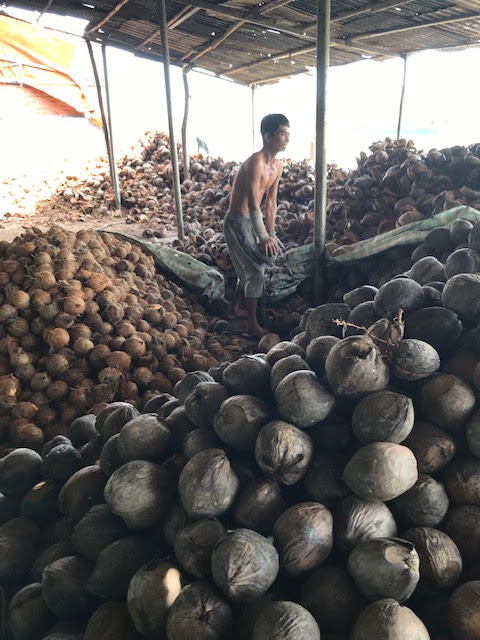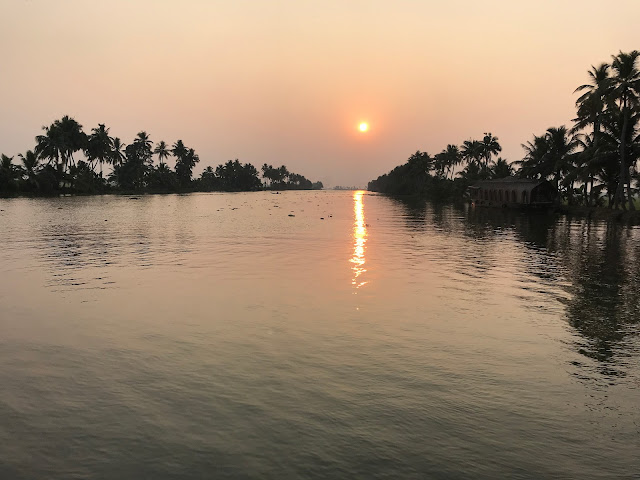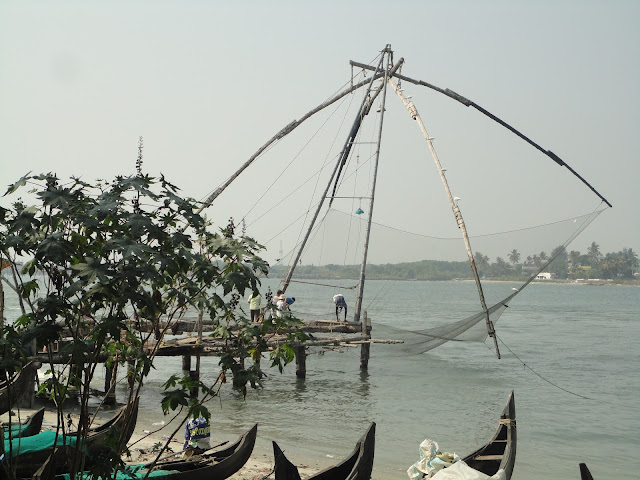Cochin Fall (The Colonials)
By Liz Harris
Publisher: Heywood Press
Page Length: 351 Pages
Genre: Historical Fiction/Historical Romance
British Cochin, 1934
Returning to her home among the palm trees that line the coast of Cochin, South India, after six years at school in England, Clara Saunders is thrilled to learn that the future mapped out for her by her trader father is the one she would have chosen herself.
It’s a future that will unite her with her childhood sweetheart, George Goddard, the son of a neighbouring trader. It will also cement her friendship with George’s vivacious sister, Lizzie, and bring even closer together the two successful trading companies.
Trader Lewis Mackenzie, an employee of Clara’s father, is both ruthless and ambitious. Keen on seeing an expansion of Saunders & Co, and frustrated by the complacency shown by Henry Saunders, he determines to take matters into his own hands.
One simple misunderstanding gives rise to further misunderstandings, and in the face of potential disaster, the happiness of several people hangs in the balance.
BACK TO INDIA!
Back to the south of India to be precise, to the Indian state known today as Kerala.
A couple of years ago, when I was deciding what to write after Darjeeling Inheritance, I kept on finding myself mentally back in India, but further south in India than Darjeeling – in the State of Kerala. Or in Kochi to be more precise, the town on the west coast of South India where I’d wound up my three magical weeks in India.
So I decided that I would just have to locate my next book there, and that, as Kochi, known as the Queen of the Arabian Sea, had been an important spice trading centre since the 14th century, my story must be about two trading families.
Unusually quickly for me, I came up with a title - Kerala Waters – and I started upon my research. One of the first things I discovered, alas, was that prior to 1956, there was no Kerala - it was the State of Cochin and Travancore. The State of Kerala didn’t come into being until November 1956, when Cochin and Travancore were merged.
Darn, I thought when I first read this.
I found also that in 1934, the year in which my novel is set, Kochi was known as Cochin, and the enclave ruled by the British was known as British Cochin or Fort Cochin. Since I wanted the title to locate the novel, as it did with Darjeeling Inheritance and also with the yet-to-be-published Hanoi Spring, and at the same time be true to the period in which the book was set, it would have to include Cochin, not Kochi.
But Cochin and Travancore Waters didn’t exactly trip off your tongue, and I knew I’d have to come up with something different.
I said Cochin Waters out loud several times, and realised that it sounded to the ear as Coach in Waters, thereby conjuring up an unwelcome image for my novel, and an incorrect one - there were rickshaws in British Cochin, but no coaches - and none of the rickshaws was stranded in the water.
Having rejected that as a title, I tried single words that might follow Cochin, and I came upon ‘Fall’. It fitted well with the story I was planning, and I rather liked its ambiguity – for Americans, fall is the autumn; for the Brits, and Americans, too, a fall is a tumble from a literal or figurative height.
Thus, Cochin Fall came into being.
Over 600 years ago, Cochin merchants started trading in spices, such as cardamom and black pepper, with the Arabs, Dutch, Phoenicians, Portuguese, and Chinese. The town prospered, which made it attractive to other nations overseas, and it was in Fort Cochin that the colonisation of India began. The Portuguese, who arrived in the 1500s, were the first to colonise Cochin. They were followed by the Dutch and then the British.
So given the importance of peppercorns and coconuts to Cochin in both the past and more recent present, I decided that the father of Clara Saunders would deal primarily in black pepper, and the father of her childhood sweetheart, George Goddard, would deal in coconuts.
I then started thinking about my characters
Clara Saunders, who’d just returned from several years of school in England, would be interested in the production of peppercorns, I blithely thought before I’d put finger to keyboard. And then I started to type, standing in Clara’s shoes. Moments later, I pulled myself up sharply.
No, she wouldn’t, I realised. Clara was totally different from Charlotte in Darjeeling Inheritance.
Like the majority of girls of her age at that time, Clara had no interest at all in her father’s trade – she was interested only in her future happiness, which she fervently hoped was going to include George.
Indeed, on her first evening home, as she’d stood in the balmy night and gazed at an expanse of moonlit ocean that was framed by the tall slender palm-trees that grew on either side of her garden, she was thinking only of how lucky she was that her father’s plans for her had coincided so perfectly with her own. Her future looked very rosy, she’d thought happily, leaning forward against the balustrade.
But unseen by Clara, in the shadows beyond the fringe of palm trees …
I must stop! I’m digressing.
Instead, I should be explaining why I chose the year 1934 for my story, and not 1933 or 1935? The answer lies in the post-WW1 history of Cochin.
Before WW1, change was afoot in the sea-faring world. The Suez Canal had opened in 1869, and the transition from sail to steamships was well under way, with all-coal ships, that didn’t have sails, increasingly being seen on the ocean.
But Cochin, although a thriving trading centre, looked unlikely to benefit from this progress as large ships, which required more than eight or nine feet of water, were unable to enter the harbour. Tantalisingly, there was a large expanse of natural backwaters lying behind the narrow harbour mouth which wasn’t able to be utilised.
It was Lord Willingdon, then Governor of Madras, who decided that Cochin should be upgraded, to use a word in current usage.
This was no fanciful idea, conjured up after a glass of brandy or two.
There was a strong case for building a modern sea port in the southern part of India as there was no deep harbour in India south of Bombay, and Bombay was some way north of Cochin.
So in 1920, Lord Willingdon selected Sir Robert Bristow, a leading British harbour engineer, to head the project, and Bristow was asked to begin by determining if it was feasible for Cochin to be made into a major sea port.
The challenge facing the engineer took the shape of a formidable ridge of heavy, densely packed sand that lay between the backwaters and the sea, preventing large ships from entering the harbour. It was believed that the removal of the rock-like sandbar was a technical impossibility, and that in addition, the annual monsoon would inevitably frustrate any attempts at improving the sea bed as it would cause the sand on the seabed to shift.
However Bristow, with great ingenuity, came up with a way of building groynes that would hold the sand in place during the violence of the monsoon period. After the success of his plan, the way was clear for the sea bed to be dredged in order to add depth to the harbour, and accordingly, in 1926, a dredger arrived in Cochin, and began the process of scooping up mud from the sea bed.
What to do with the dredged mud was the question.
Unlike the situation in the ‘Shawshank Redemption’, where every morning Andy Dufresne deposited the product of his night’s digging by letting it fall down his trousers on to the ground as he walked around, there was a little too much mud to be disposed of in such a manner, and it was decided to use the mud to build an island that would house the port buildings and other trading establishments.
Two years later, after dredging for at least twenty hours a day, the new island - the largest man-made island in India - was complete. And with the harbour now considerably deeper, March 1928 saw the new port open to sea-going vessels. The following year, the mooring areas alongside the wharfs had also been dredged, and they, too, could now be accessed by all ships.
As I wanted Clara to return to Cochin by sea, and not have to disembark in Bombay and negotiate the tortuous route south to Cochin, I couldn’t let her return to her family until passenger-carrying liners were stopping regularly at Cochin. This meant that the novel couldn’t realistically be set earlier than 1932/1933.
But I ruled out both 1932 and 1933 for two reasons.
In 1933, Lord Willingdon, by then Viceroy of India, visited the Maharajah of Cochin and was honoured by the new island being called Willingdon Island. The small British community would have engaged in massive preparations for an occasion of such importance. The preparations could even have begun the year before, and they would have involved all of the British colonial rulers there, and the leading traders, which would include the fathers of Clara and George. The visit would have dominated the conversation for some months, and I didn’t want my novel to be set against such a background.
Secondly, I didn’t want those who’d traded for years to be worrying that the larger companies, which would move into Cochin now that it was open to all ships, might put them out of business. Such a fear would have predominated, and I didn’t want this, either, to be a theme in my book. By 1934, they’d be confident that this wasn’t going to happen.
As for 1935, it would have felt a tad too close to WW2, I thought.
The British in Cochin, with family back in England, were bound to be becoming aware of the general concern among the governing class back in England about what was happening in Europe.
And the political position in India, too, was something to note. Although Fort Cochin wasn’t in the thick of the movement for India’s Independence from Britain, which was still some way off - it didn’t come about until 1947 - increasingly the struggle for freedom was being felt across the country, and that meant in Cochin, too.
I didn’t want to have to deal with either of those political matters in the novel. This was to be about Clara and George, and a simple mistake that came to jeopardise their future and their happiness, as well as that of their families.
So I chose to begin my story in 1934.
I hope you enjoy it!
Cochin Fall.
The whole evening had been perfect. There was nothing at all standing in the way of her happiness and George’s, she thought as she stared at the view. Leaning against the wooden balustrade, she let herself be drawn into the beauty of the scene.
A twig snapped.
It seemed to come from somewhere to her right. She frowned, and glanced in that direction.
But there was no movement at all among the shadows.
Shrugging, she returned to the view.
Then she heard it again. Followed by silence.
Her skin prickled and goosebumps ran along her arm.
She wasn’t alone.
There was someone out there, hidden in the velvet darkness of night, watching her. She could sense their presence.
Straightening up, she pulled her shawl more tightly around her shoulders.
Could it be George, she wondered.
She glanced to the left, to the narrow path that separated the tall palm trees from the sand.
George’s house being only fifteen minutes’ walk along the path—less if he ran—many a time as they’d grown older, he would secretly slip out after dinner, run along to her house, and call quietly up to her. She’d throw something over her nightdress, creep down the stairs, and go out to him, giggling.
Together, they’d sit on the lower verandah, their cane chairs touching, their heads close, sharing the dreams they’d tell no one else.
So could it be George out there, eager to see her on her first night home?
Smoothing down her auburn hair, she stared to the left, waiting.
Nothing.
Then it couldn’t be George, she realised. He wouldn’t have hidden away for so long. He would never have done something that he’d know would scare her. And the sound she’d heard had come from the wrong side of the garden, anyway.
Maybe one of their servants was taking a late night walk. In sudden hope, she ran to the far corner of the house and stared down into the garden.
But the godowns where their servants lived, and where their cook prepared her family’s meals, were in darkness. She couldn’t see behind them to the jetty and godown in which her father’s private launch was kept because the trees hid them from sight, but there’d be no one there at that time of night.
And why would there be anyone out there, cloaked in darkness?
It’ll have been a small animal or a bird. Nothing more alarming than that, she thought, and walking back along the verandah, she scolded herself for being so fanciful. She’d been away for so long that she’d forgotten the many sounds in an Indian night.
And with one final glance at the glistening dark water, she went back into her bedroom, into the warm amber glow thrown out by the lamps, and pulled the shutters tightly closed behind her.
A few moments later, a dark figure emerged from the shadow of the tallest coconut tree on the right, paused, and stared up at the deserted verandah.
His eyes glittered, reflecting the light of the moon as he stood there, motionless.
Then he turned away, and walked back into the gaping mouth of darkness.












A very interesting post. Thank you for sharing.
ReplyDelete